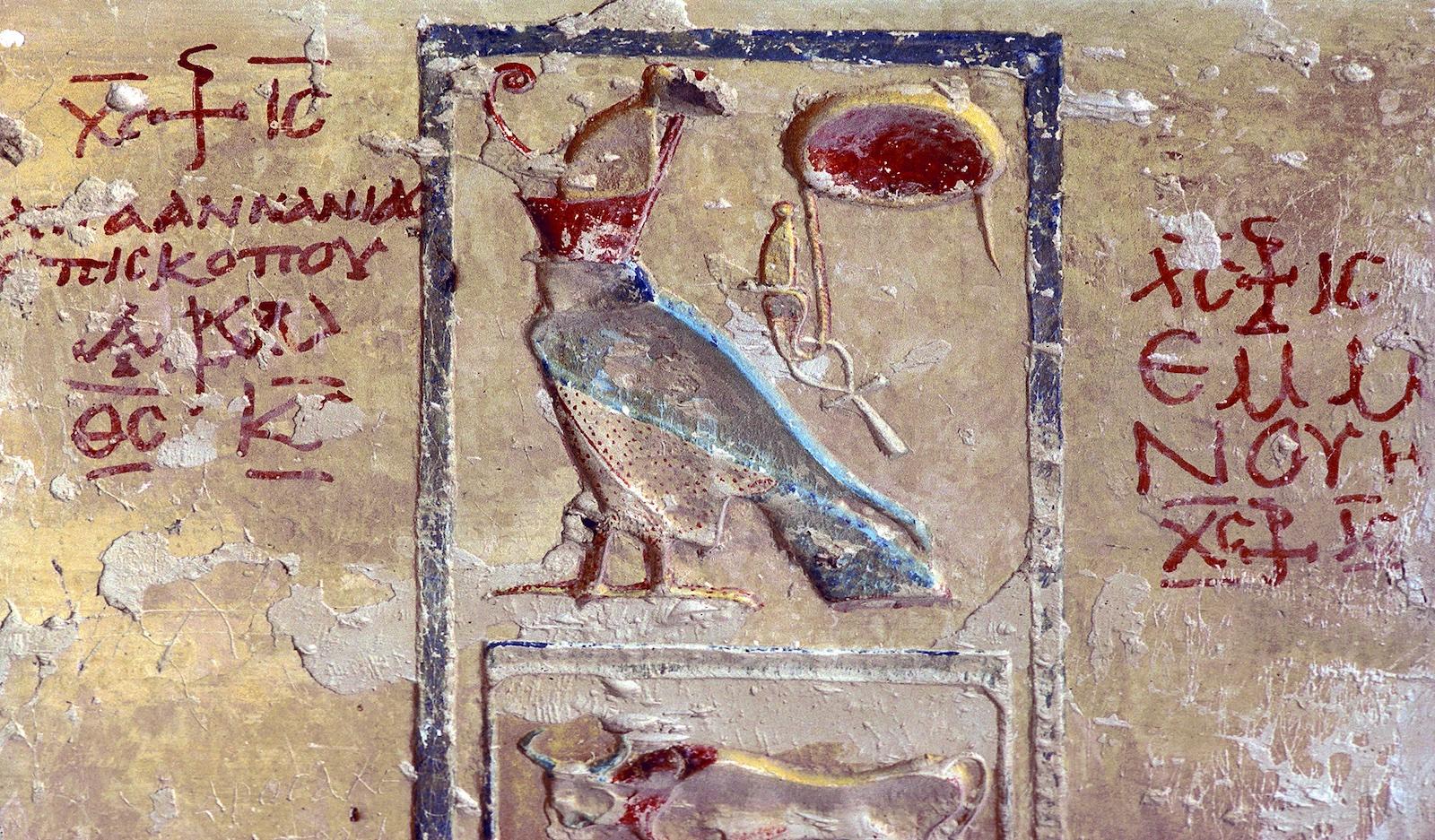Third Intermediate Period
At the end of the New Kingdom, Egypt entered a period of political and economic decline. The priesthood of Amen at Thebes administered Upper Egypt, while kings ruling from Tanis controlled Lower Egypt. The Valley of the Kings suffered from plundering, which led the ruling high priests of Amen during Dynasty 21 to rewrap and conceal the royal mummies in tombs such as KV 17, KV 35 and KV 57, in order to protect them. Later some of the mummies were moved to a cache south of Dayr al Bahri in TT 320. Meanwhile, a number of tombs of the Valley of the Kings were reused either for non-royal burials (KV 19, KV 22, KV 24, KV 25, KV 34, KV 44, KV 45, and KV 47) or as a storage/work area (KV 4).
Graeco-Roman Era
For centuries, the Valley of the Kings remained almost deserted, until the arrival of the Greeks during the third century B.C., who expressed a new interest in the Valley, and the monuments of Egypt in general. Two of the major tourist attractions in Thebes were the Colossi of Memnon, the pair of massive statues that preceded the pylon of the Memorial Temple of Amenhetep III. The northern one emitted a whistling sound at dawn, caused presumably by heated air escaping from cracks which appeared after an earthquake damaged the statue. Thus, it reminded the Greek visitors of the myth of Memnon who cried out to his mother, Eos, the goddess of the dawn, and hence its name. A graffito carved on the foot of the colossus reads as follows: "From Trebulla. Hearing the holy voice of Memnon I missed you, O my Mother, and I prayed that you might hear him too."
The Valley of the Kings was another frequently visited site in Graeco-Roman times. Over two thousand Greek and Latin graffiti can be found in ten royal tombs (KV 1, KV 2, KV 4, KV 6, KV 7, KV 8, KV 9, KV 10, KV 11, KV 15). KV 9 attracted the most visitors, probably because Rameses VI's Cartouche strongly resembles the one of Amenhetep III and might have been a reminder of their hero, Memnon. Around one thousand graffiti have been recorded by scholars in this tomb alone.
The graffiti are often limited to a name and sometimes a date, but others give the visitor's profession, and his comment about the tomb (An example: “I, Dioskorammon, looked at this nonsense and found it bewildering.”). The heyday of Greek and Roman travel to Thebes was between the 3rd century BCE and 6th century CE.
Diodorus Siculus and Strabo both visited Egypt between 60-56 B.C. and 25-24 B.C., respectively. According to Diodorus, priests claimed the Valley once contained forty-seven royal tombs, but that, during the reign of Ptolemy I, only seventeen remained. Strabo also mentioned the tombs in the Valley of the Kings.
Byzantine Period
The next period of activity in the Valley of the Kings corresponds to the expansion of Christianity in Egypt. From the fifth century A.D. onwards, several tombs of the Valley (KV 1, KV 2, KV 4, KV 8, KV 9, KV 15) were used by hermit monks as refuges, while KV 3 was converted into a chapel. Numerous graffiti record hymns and prayers, representations of saints and crosses, and Christian names.

From about the sixth century CE until the eighteenth century, virtually nothing is known about Thebes or the Valley of the Kings. There are no graffiti, no visitors’ journals, no letters, and no sketches.
